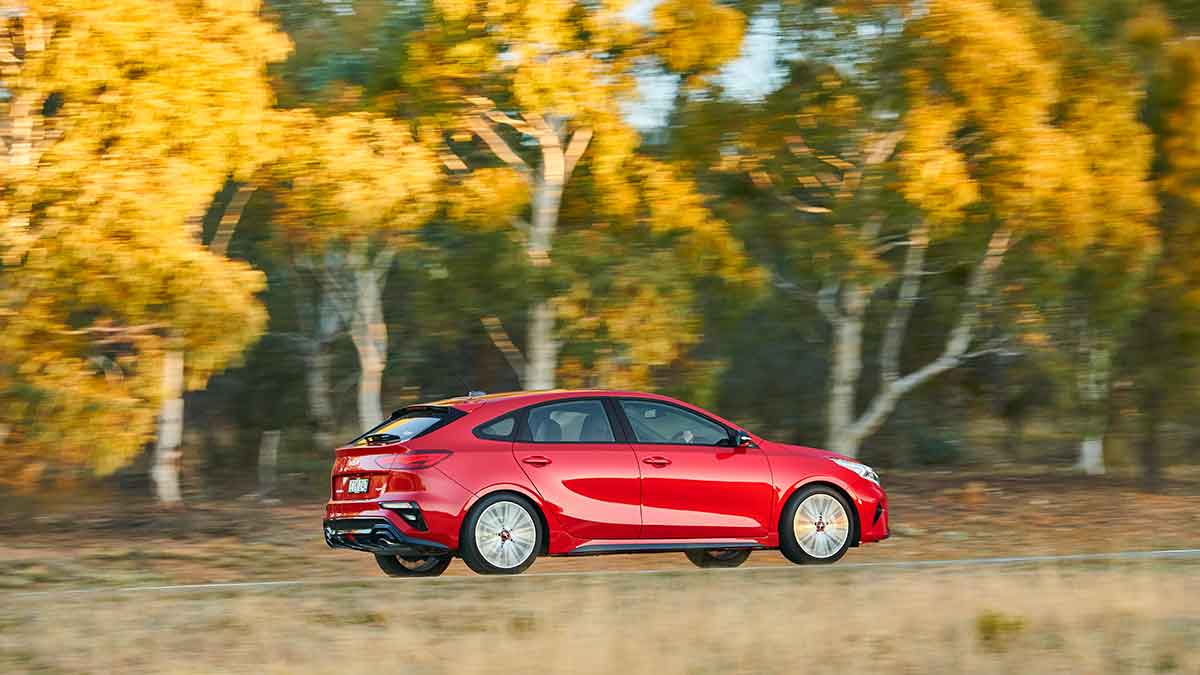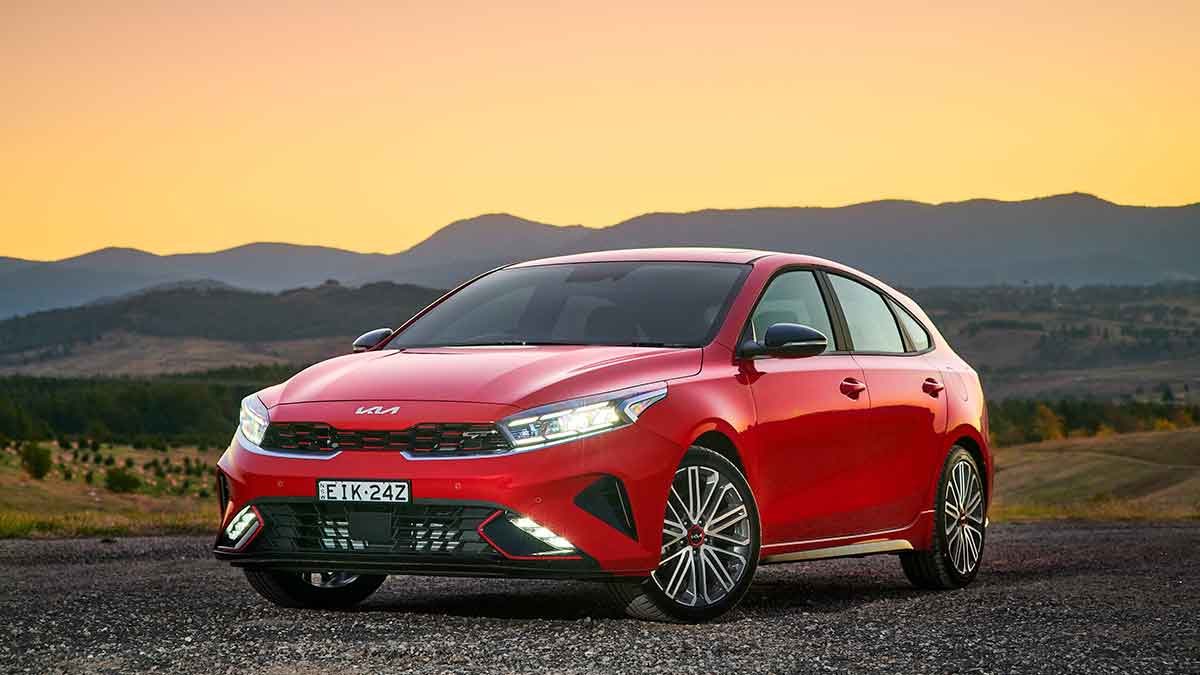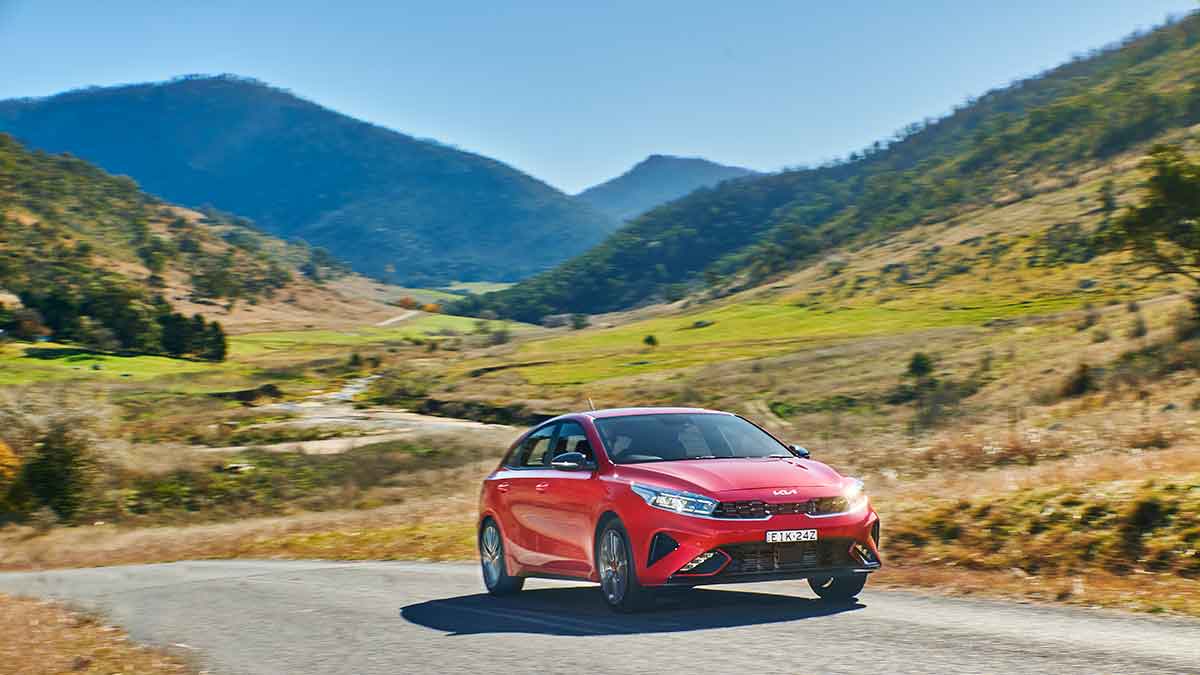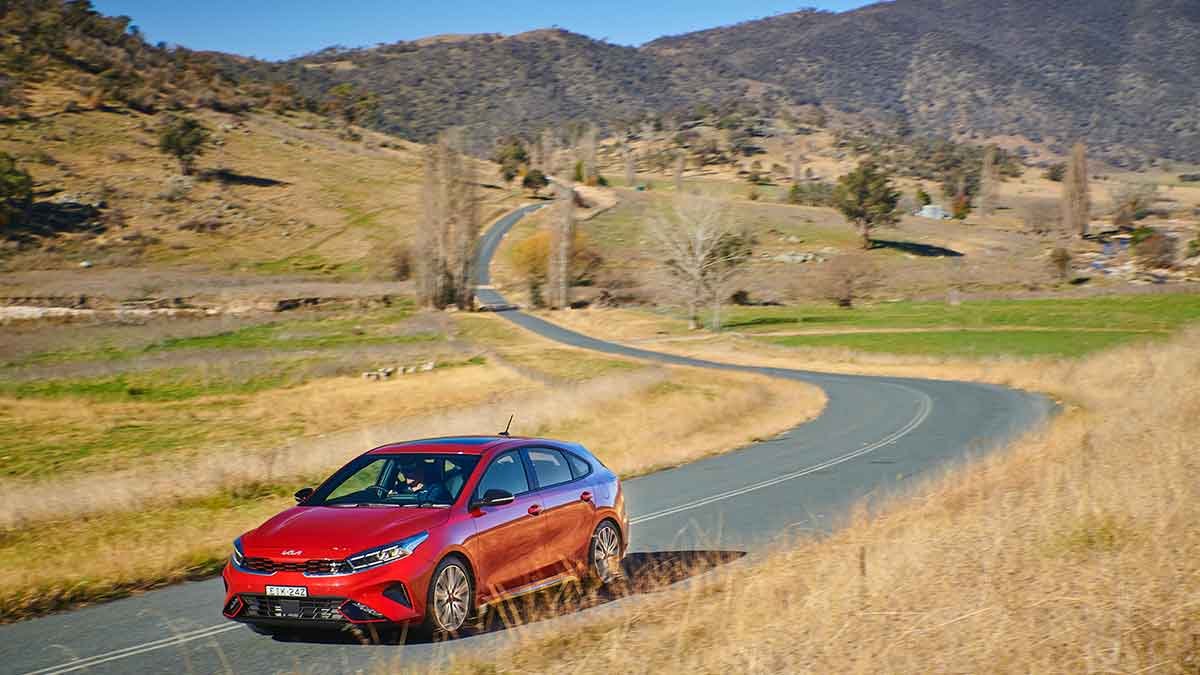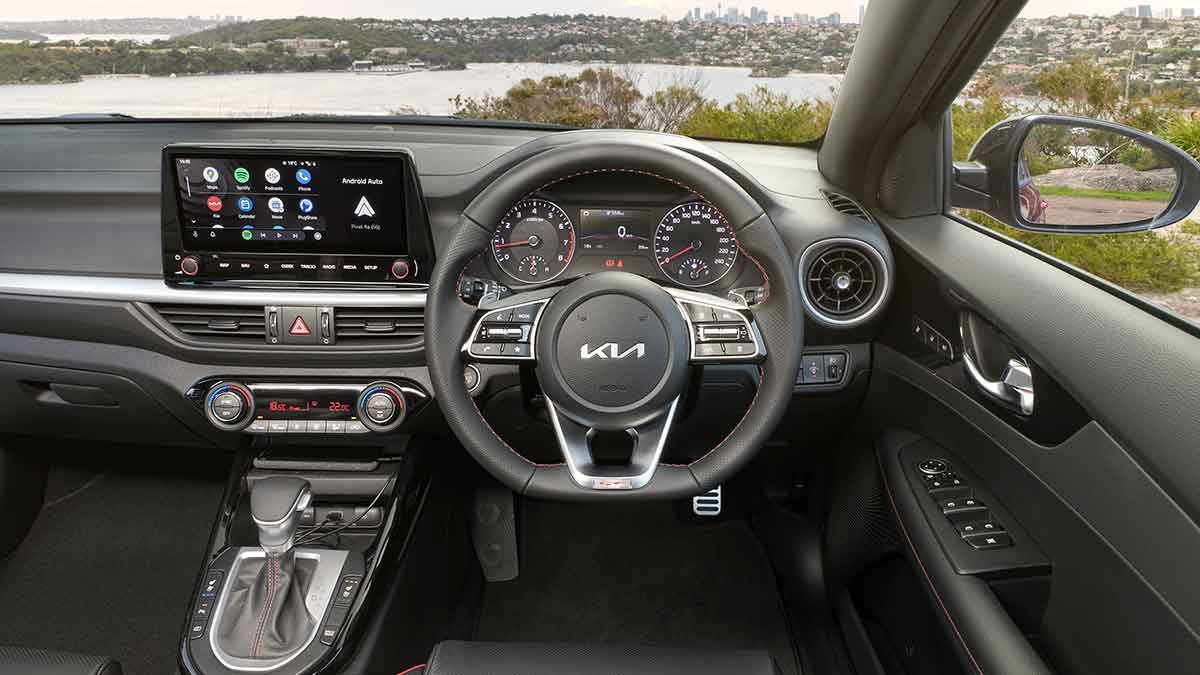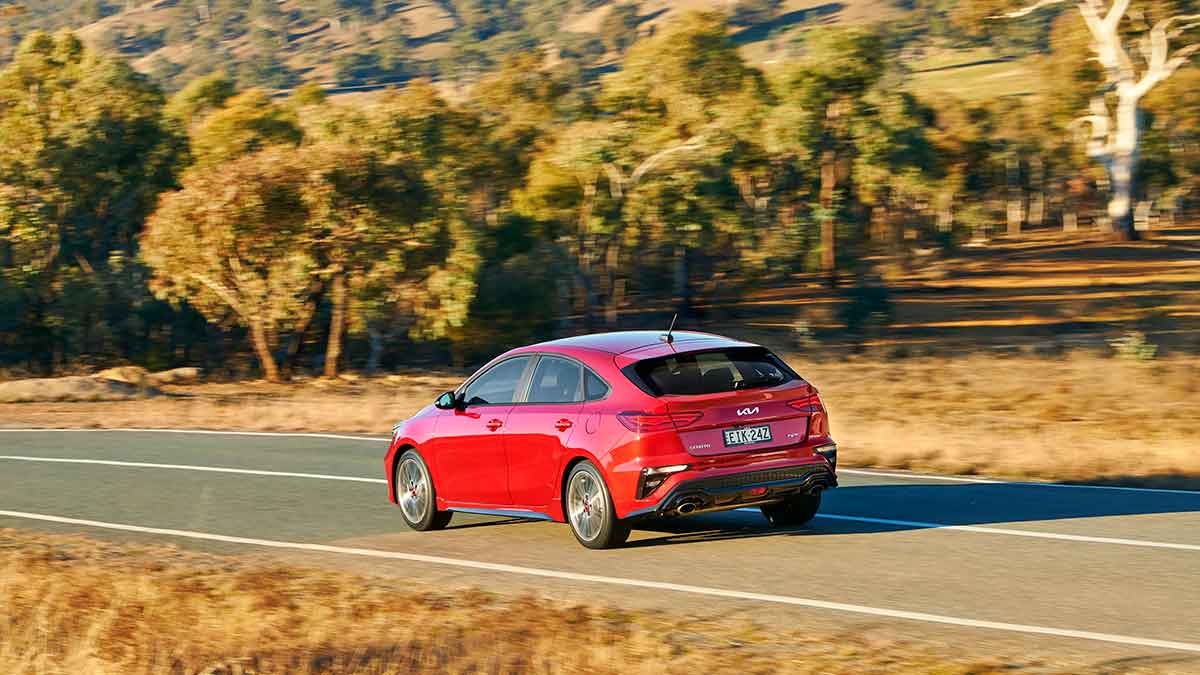The Foton Tunland joins Australia's dual-cab ute market as an affordable mild-hybrid diesel under $50,000, offering strong capability against tough competition.
2021 Kia Cerato road test review

If you're after a fancier and warmer-than-average small car, The Kia Cerato GT in sedan or hatch may be your next set of wheels.
The Cerato is Kia’s best-selling vehicle by a long shot, and the third most popular small car in the country.
That success has been buttressed by a combination of decent looks, good driving dynamics, value for money and the reassurance of a seven-year warranty.
A mid-life update earlier this year freshened the look and saw both the hatch and sedan versions become the first in the fleet to be adorned with the new corporate logo.
Rivals to the Kia Cerato GT include the Mazda3 G25 GT at $34,890 plus on-roads, a Volkswagen Golf 11-0TSI Life at $34,450 before on-roads, and Hyundai i30 N-Line Premium with a sticker price of $34,220.
On this page
What do you get for the price?
Unlike many rivals, Cerato pricing is the same for both the hatch and sedan versions.
The range starts with the ‘S' variant aimed at thrifty types and car fleet managers, with a sticker price of $25,490 before on-road costs. It is powered by a 2.0-litre engine good for 112kW and 192NM, powering the front wheels via a conventional six-speed automatic transmission. Standard gear includes an 8.0-inch LCD touchscreen with wireless Android Auto and Apple CarPlay connectivity, halogen headlamps and 16-inch steel wheels. A reversing camera is standard, as are parking sensors front and rear.
The $27,590 Sport is the next step up the Cerato ladder and expands the touchscreen to 10.25 inches, as well as adding 17-inch alloy wheels, a digital radio and satellite navigation with 10 years of free map updates.
Opt for the Sport+ at $30,690 and the extra equipment extends to leather seats with inbuilt heaters in the front pair, dual-zone clime control, an electronic parking brake and adaptive cruise control.
The GT version tops the range at $35,290 and brings a 1.6-litre turbocharged engine, seven-speed dual-clutch transmission, multi-link rear suspension, 18-inch alloys wheels, upgraded sound system, sunroof, LED headlamps and heated and ventilated front seats.
Buy before December 31 and Kia will put the Cerato on the road for $25,990 for the S, $27,990 for the Sport, $31,690 for the Sport+ and $36,990 for the GT.
Expect to spend an extra $520 if you want any paint colour other than white.
Servicing intervals are every year or 10,000km for the Kia Cerato GT and a seven-year capped price servicing deal costs $3234.
The naturally-aspirated models manage 12 months or 15,000km between services and cost $2923 over seven years.
How safe is the Kia Cerato?
This is where it gets interesting. ANCAP rated the S and Sport versions at four stars due to the absence of some safety features. Buyers can add those features in the form of a $1000 Safety Pack that bundles blind-spot detection, rear cross-traffic alert and updates the automated emergency braking software to identify cyclists. A bigger set of rear brakes, folding mirrors and an electronic park brake are part of the package.
The safety pack goodies are standard on the Sport+ and GT and those variants were accordingly rated at five stars, with a 90 per cent score for adult occupant protection, 83 per cent for child occupant protection, 72 per cent for vulnerable road user protection and 73 per cent for the safety assist gear.
What’s the Kia Cerato GT like inside?
Classy, without challenging a (more expensive) VW Golf for premium looks and feel. Contrast stitching, a flat-bottomed steering wheel and alloy pedals impart a sporty look, while the textured plastics feel durable enough to deal with the occasional hefty knock.
The Qi wireless phone charger is large enough to accommodate big-screen mobiles and there are a pair of USB ports to keep those devices powered or activate the Android Auto/Apple CarPlay.
The driver’s display includes a TFT display nestled between a pair of clear analogue dials. The screen shows trip meter data and, importantly, a digital speedometer.
Leg and headroom is fine in the back for a pair of adults and an armrest with cupholders pops down from the centre seat. The outboard seats have Isofix latches to secure child seats, while the centre position relies on a top tether.
A pair of air vents provide respite from the summer heat and there’s another USB for back-seat connectivity.
Boot space runs to 428 litres in the hatch and 502 litres in the sedan and there are a pair of handy hooks for securing your shopping bags.
What’s under the bonnet?
With 150kW and 265Nm from the turbocharged engine, the Cerato GT deserves to be considered as a genuinely warm hatch. Only the mechanically identical Hyundai i30 N-Line comes close in terms of value and performance in this segment. Expect a 0-100km/h time of just under seven seconds.
The seven-speed dual-clutch automatic transmission hesitates for a heartbeat when taking off, which can be mildly frustrating in stop-start traffic. Once underway, the response is quick and smooth unless you are hammering at full throttle. A pair of paddle-shifters let you play with manual gearchanges should it suit.
Is the Kia Cerato GT efficient?
Kia claims the GT hatch uses 6.8 litres over 100km in the combined cycle, with the sedan swallowing 6.9L/100km. In the real world, that figure is likely to balloon into the mid-eights. The official CO2 emission is 158g/km. Thankfully, the Cerato GT has been tuned to run on regular 91 RON fuel.
How does the Kia Cerato GT drive?
With verve.
The suspension has been revised as part of the update and the car is more tolerant of sharp-edged potholes and speedhumps as a result. Work the dampers a bit harder and the resistance increases dramatically to make the Cerato GT an entertaining car to drive on back roads.
There is very little body roll and impressive road adhesion courtesy of the Michelin Pilot Sport 4 tyres. The trade-off is some tyre roar over coarse road surfaces but if that’s the price of decent grip, I’ll take it.
There are four drive modes: Eco, Comfort, Smart and Sport.
Smart is the smartest option around town where the Cerato GT will identify how enthusiastic the driver is being and adapt throttle response and gear changes appropriately.
The only criticism is with the engine sound. The turbo’s exhaust note naturally sounds alright, so it doesn’t need artificial “augmentation”.
The fake noise can actually be irritating in Sport mode when you’re having a decent crack …let owners appreciate the native turbo induction and exhaust sounds.
Should I buy one?
If you are in the market for a stylish small car and appreciate chasing corners on the weekends, the Cerato GT should definitely be on the shortlist.
It ticks all the conventional boxes as a safe and practical vehicle with all the mod cons (with the notable exception of a head-up display) and can masquerade as a hot hatch when the need arises.
The information provided is general advice only. Before making any decisions please consider your own circumstances and the Product Disclosure Statement and Target Market Determinations. For copies, visit racv.com.au. As distributor, RACV Insurance Services Pty Ltd AFS Licence No. 230039 receives commission for each policy sold or renewed. Product(s) issued by Insurance Manufacturers of Australia ABN 93 004 208 084 AFS Licence No. 227678.
